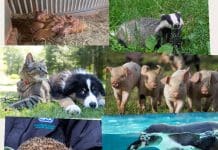A collision involving two vehicles that resulted in a car fire occurred following the sighting of a swan on a dual carriageway.
Firefighters and police were summoned to the A3049 Dorset Way, Poole, shortly before 08:00 BST.
Dorset Police reported that those implicated in the collision, near Mannings Heath roundabout, sustained minor injuries.
Dorset & Wiltshire Fire and Rescue stated that the wildlife rescue organisation Wildlife in Need was called upon to assist with the swan, which “suffered no harm and departed the scene.”.
The road remained shut for approximately two hours to facilitate the retrieval of the vehicles and the clearance of debris, reopening at 09:50.
Swans
Swans, with their majestic presence and graceful demeanour, have long captivated the human imagination. Revered in folklore, literature, and art, these elegant birds symbolise beauty, purity, and tranquility.
Swans belong to the genus Cygnus and are part of the Anatidae family, which includes ducks and geese. Among the various species of swans, the mute swan (Cygnus olor), the trumpeter swan (Cygnus buccinator), and the whooper swan (Cygnus cygnus) are the most well-known. These birds are renowned for their distinctive white plumage, long necks, and graceful movements both on land and in water.
One of the most remarkable features of swans is their devotion to their mates. Swans are monogamous creatures, forming strong pair bonds that often last for life. During courtship, they engage in elaborate displays of affection, such as synchronised swimming and neck arching. This commitment to their partners has led swans to become symbols of love and fidelity in many cultures.
Swans are also celebrated for their gracefulness in flight and on water. With powerful wingspans, they glide effortlessly across lakes and rivers, exuding an aura of serenity and tranquility. Their elegant movements have inspired poets, artists, and musicians throughout history, evoking a sense of wonder and admiration.
In addition to their aesthetic appeal, swans play crucial ecological roles in their ecosystems. As herbivores, they feed on aquatic vegetation, helping to control its growth and maintain the balance of wetland habitats. Furthermore, their nesting activities create important habitats for other wildlife species, contributing to biodiversity conservation.
Despite their cultural significance and ecological importance, swans face various threats to their survival. Habitat loss, pollution, illegal hunting, and collisions with power lines and vehicles are among the challenges they encounter. Climate change also poses a significant risk, altering the availability of suitable habitats and disrupting migratory patterns.
Efforts to conserve swan populations involve a combination of habitat protection, law enforcement, and public awareness initiatives. Wetland restoration projects, strict regulations on hunting, and community engagement in wildlife conservation play essential roles in safeguarding these magnificent birds for future generations.
If you like our content, join us in helping to bring reality and decency back by SUBSCRIBING to our Youtube channel: https://www.youtube.com/channel/UCQ1Ll1ylCg8U19AhNl-NoTg AND SUPPORTING US where you can: Award Winning Independent Citizen Media Needs Your Help. PLEASE SUPPORT US FOR JUST £2 A MONTH https://dorseteye.com/donate/












